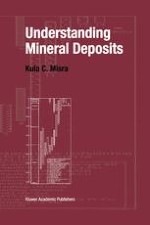2000 | OriginalPaper | Chapter
Precambrian Iron-Formations
Author : Kula C. Misra
Published in: Understanding Mineral Deposits
Publisher: Springer Netherlands
Included in: Professional Book Archive
Activate our intelligent search to find suitable subject content or patents.
Select sections of text to find matching patents with Artificial Intelligence. powered by
Select sections of text to find additional relevant content using AI-assisted search. powered by
Sedimentary rocks, including chemical precipitates formed by exhalative processes, often contain high enough iron to be considered ferruginous, or even iron deposits. Two major groups of iron-rich sedimentary rocks are recognized (James 1966): (a) ironstones, which are non-cherty, oölitic, poorly banded, and largely of Phanerozoic age; and (b) iron-formations, which are typically laminated with chert, generally non-oölitic, and largely (but not exclusively) of Precambrian age. Other groups of iron-rich rocks of lesser economic importance not considered here (but discussed, for example, by Borchiert 1960, Stanton 1972) include: (a) the blackband and clayband ores, most of which are diagenetic and post-diagenetic deposits of siderite found in coal measures and in some clays; (b) the bog iron ores found in many bogs and small lakes in higher latitudes; and (c) latentes derived by weathering of Fe-rich rocks (see Ch. 2). In this chapter we restrict our attention to the so called iron-formations, which constitute by far the most abundant and economically the most important iron-rich sediments.
